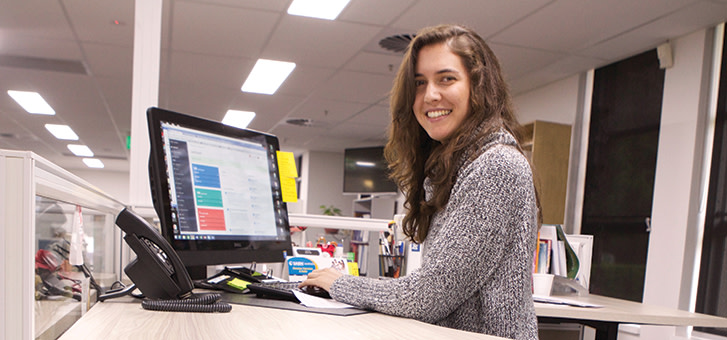They have been sprouting in offices around the country like mushrooms in recent times. Those fortunate enough to have one provided for them at work espouse their benefits like fervent evangelists, while those who don’t embark on a campaign with the human resources department to get one.
A few years ago, standing desks were the exclusive domain of hipster start-ups, where bringing your pets to work was encouraged and free-flow, organic fair-trade coffee in the common kitchen were the norm. Not so anymore. Standing desks have proliferated through all types of companies and employees.
It’s hardly surprising that they have become the new workplace must-have, thanks to numerous studies over the years that have warned about the health hazards of prolonged sitting.
The problem with sitting
Many of us spend a sedentary eight hours daily at our desks, and according to experts, too much sitting will increase our risk of developing heart disease, type 2 diabetes and other metabolic disorders, and even premature death! And if we’re fortunate enough to avoid the fatal consequences, we’re still at risk of gaining weight (prolonged periods of inactivity are linked to a slowdown of one’s metabolism); muscle degeneration in the abdominals, hips and glutes; a variety of leg disorders; and damage to the neck, shoulders, and spinal and lumbar discs.
Thus, along with standing desks, other forms of workstations have popped up over the years, all aimed at encouraging us to sit less and move more while at work. These include treadmill desks—where a treadmill is located under the desk—and bicycle desks—using a stationary bicycle. There’s also the dozing desk, which enables users to lie prone on a mattress while using their computer, but it probably serves a different purpose than the other types of “exercise” desks.
“The good thing about standing desks is that they improve blood flow, muscle contraction in the legs and posture in general. They get you moving instead of sitting for too long, encourage attention to the body and posture, and improve core strength and muscle tone in the legs,” says Matt Riemann, who regularly trains doctors, health practitioners and fitness experts around the world on the topic of personalised health and the prevention of chronic pain.
With rising obesity rates, using a standing desk at work has an additional benefit.
Karen Wojciechowski, an integrative nutrition health coach who frequently uses a standing desk herself, says, “Standing burns around 610 kJ (146 cal) per hour compared to 460 kJ (110 cal) an hour from sitting. Over the course of a 40-hour work week, this is the equivalent of burning the same amount of calories as running 10 kilometres every week.”
It’s also believed that productivity improves if you work while standing, simply because your attention span and focus are improved. And from a management perspective, workers who were given standing desks also showed more happiness and job satisfaction and felt that their employer cared about them.
The flipside of standing
Despite all the hype surrounding standing desks, they may not be the optimal solution for all weight and postural problems. “There has been a lot of talk about standing desks and the benefits they may have for your health,” says Anna Johnson, an expert from the fitness industry. “However, there are no proven long-term studies to show that standing desks actually do improve your health.”
In fact, in a study conducted earlier this year, researchers from Loughborough University in England and Victoria University in Australia found that using a standing desk at the office may adversely influence how much time you spend lounging in a chair at home.
In an interview with The New York Times, Stacy Clemes, a professor of exercise science at Loughborough University and a member of the team who conducted the study, said,
“It appears that participants were compensating for sitting less at work by sitting more and moving less after work.”
In other words, while people were sitting less at work, they ended up sitting more at home, negating any potential benefits all that standing in the office may have had.
Even if you’re one of the few who haven’t been lulled into a false sense of security when you get back home after all the standing you’ve done at work, experts are also warning about the detrimental impacts on your body from extensive standing.
While standing at work may seem like a good idea, Riemann warns that “people with poor blood circulation may end up getting things like carotid artery disease, varicose veins or even thrombosis if they stand for too long, and those with back problems may aggravate those problems and even suffer from spinal compression if they don’t get the right desk that ergonomically fits to their body.”
For women, Wojciechowski cautions about another potential hazard—the choice of footwear, in particular high heels: “You need to be wearing comfortable shoes, as sore feet are a common symptom when one first switches to standing.”
To sit or to stand?
With sitting and standing desks aggravating bad posture and causing health problems, which workstation should you choose? Unfortunately, as Riemann points out, there is no simple answer.
“Whether we are talking about desks, nutrition, losing weight, mental heath, social wellness or overall health and happiness, there is no one-size-fits-all prescription. We are all very unique beings and the combination of our genetics (inherited traits) and environment (external influences throughout life) results in each of us having very distinct health needs. A personalised approach to health and wellness is key—this includes how and where we work.”
At the same time, most experts believe there are some things we can all do to help improve our personal wellbeing, especially when at work.
“The concept is about not sitting or standing in one position all of the time,” says Danny Williams, an osteopath from Australia. “Life is motion and we need to move to allow all of our bodily functions to work well. Be aware and get up every 40 minutes. Go for a walk and have a stretch. Drink some water. [If you’re using a standing desk,] sway back and forth, use a gel mat or something that provides both comfort and support for your feet, and take breaks on occasion to rest your feet.”
Wojciechowski agrees. “Whether it’s standing or sitting, the key is to keep moving, so changing between postures or changing between sitting and standing will help prevent any issues associated with standing or sitting too long.
“Changing positions frequently is great for your health, your body and your productivity, so ideally start standing for 30 minutes at a time then swap to sitting for 30 minutes and then alternate between the two, taking a break to quickly walk around the office each hour or two. I set my alarm every couple of hours to do some stretching, a quick workout or just to take a few deep breaths to reset my system and energy levels.”
Whichever style of workstation you choose, it seems the experts are unanimous in one thing: daily physical activity is still vital for optimal health.
Safe standing desk practice
If you really do want to use a standing desk at work, make sure you ease yourself into the process. A study by the University of Sydney has found that standing desks can cause health problems, largely because people try to use them too much in the early stages of adoption.
“We are over-compensating and creating fatigue because we are not fit enough to stay motionless for long periods,” says Danny Williams, an osteopath from Australia.
As Dr Josephine Chau, who was involved in the University of Sydney study, told ABC News, workers should consider the move to a standing desk as like training for a marathon, not a sprint. “It’s like introducing any new exercise to yourself: your body has to get used to it. So if you go from zero standing to standing two hours a day, you’re probably going to experience some kind of discomfort.”






